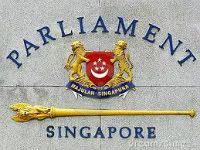
This was a speech I made during the Committee of Supply debate on 1 March 2012.
——————
Mr Chairman,
Containing the cost of living, and lowering workplace and career impediments to child-bearing and child-rearing are critical if we are to increase Singapore’s flagging total fertility rate (TFR).
The expenses for parents are especially challenging during the first 6 years of their children’s lives, in large part because of the high and increasing cost of childcare. This could be a discouragement to them having more children. The childcare subsidy should be increased from the current $300 per month for middle income working mothers. If the Government is willing to subsidise 90% of training fees for adult workers, including permanent residents, it possible to increase subsidies for the care and education of our future Singaporean workers?
There should be increased support and strong incentives for employers to implement and maintain better work-life balance practices, including part-time work, flexi-work arrangements and telecommuting. Government support could come not only in the form of work-life consultancy assistance schemes, or grants for implementing work-life initiatives, but on-going tax incentives to companies that implement and maintain good work-life balance practices.
Paternity leave of at least 6 days per new-born child should be introduced and legislated. Half of this should be funded by the government and the rest by employers. This will allow families to bond together during the critical period after childbirth, and will also recognise the important role of fathers in sharing the responsibilities of infant care. All this could have a positive effects on birth rates.
Could we also look into less conventional ways of increasing Singapore’s TFR, without compromising on the values that Singaporeans hold dear?
Firstly, reducing the abortion rate. There are about 12,000 abortions carried out each year in Singapore, with the majority performed on married women . If more of these abortions could be avoided, it could naturally increase Singapore’s birth rate.
Most of the reasons given for termination of pregnancies are due to financial or social reasons. Can we do more to ensure that pregnant women in these circumstances are given all possible assistance so that they may consider other options, like giving up their babies for adoption?
If they choose to keep their babies, can they be provided parenthood benefit packages, even if they are unmarried? While having children outside of marriage should continue to be discouraged, the package actually benefits the children, who are innocent parties after all.
And lastly, can all foreign spouses of Singaporeans be allowed to reside in Singapore and work to help support their family? Priority should be given to their PR and citizenship applications, particularly if they already have Singaporean children. This will ensure the unity of the family and could encourage these couples to have more Singaporean children.
